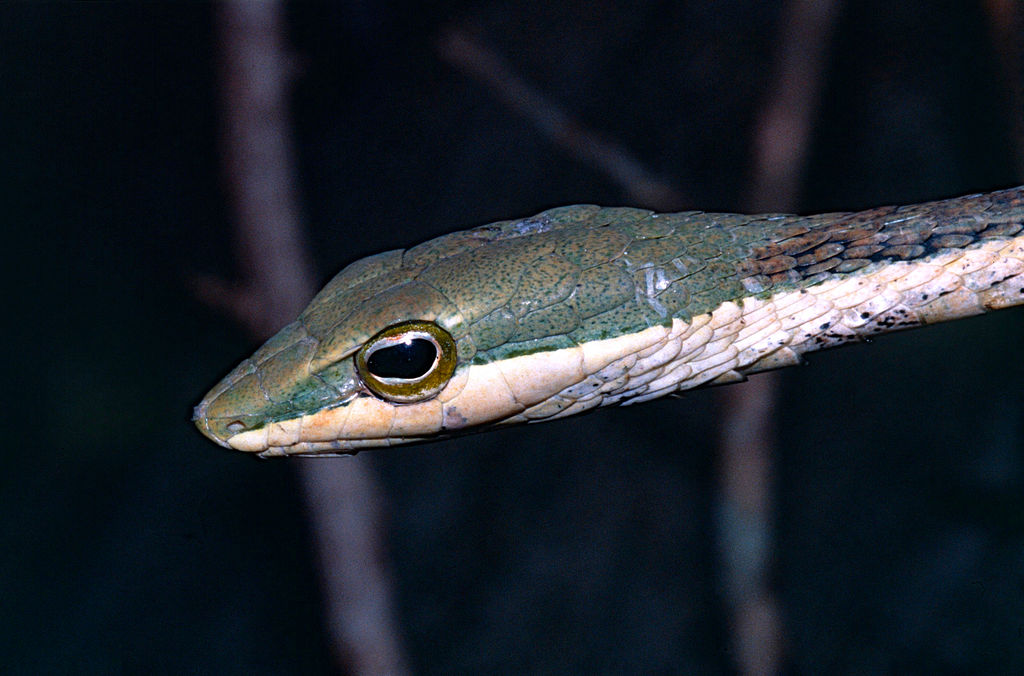In the shadowy understory of forests across various parts of the world, nature has perfected the art of deception. Among the most remarkable practitioners of this craft is a group of snakes that have evolved to resemble fallen branches so convincingly that they disappear into the forest floor before our very eyes. These serpentine masters of disguise have developed not just coloration that mimics dead wood, but behaviors and body shapes that complete the illusion. Their evolutionary journey toward perfect camouflage represents one of nature’s most impressive adaptations, allowing them to simultaneously become invisible to predators and undetectable to prey. As we explore these remarkable reptiles, we’ll discover how the line between animal and environment can blur until the distinction almost vanishes completely.
The Ultimate Masters of Disguise
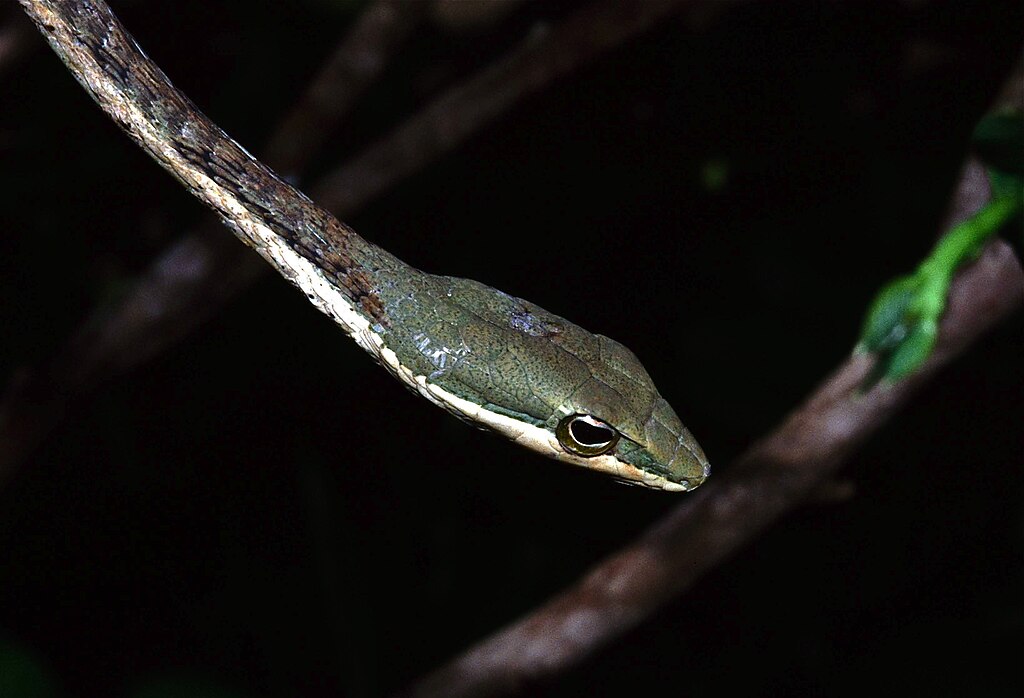
When it comes to camouflage in the animal kingdom, few creatures have perfected the art quite like the twig or vine snakes. Species like the brown vine snake (Oxybelis aeneus) and the Asian vine snake (Ahaetulla prasina) have evolved body shapes and coloration that mimic fallen branches, twigs, or vines with uncanny precision. Their slender, elongated bodies naturally resemble woody stems, while their rough, textured scales often replicate the appearance of bark or the surface of dried twigs. Some species even develop irregular color patterns that mimic lichen growth or the mottled appearance of decaying wood. This disguise is so effective that even experienced herpetologists can walk right past these snakes in the wild without noticing them.
The Remarkable Twig Snake
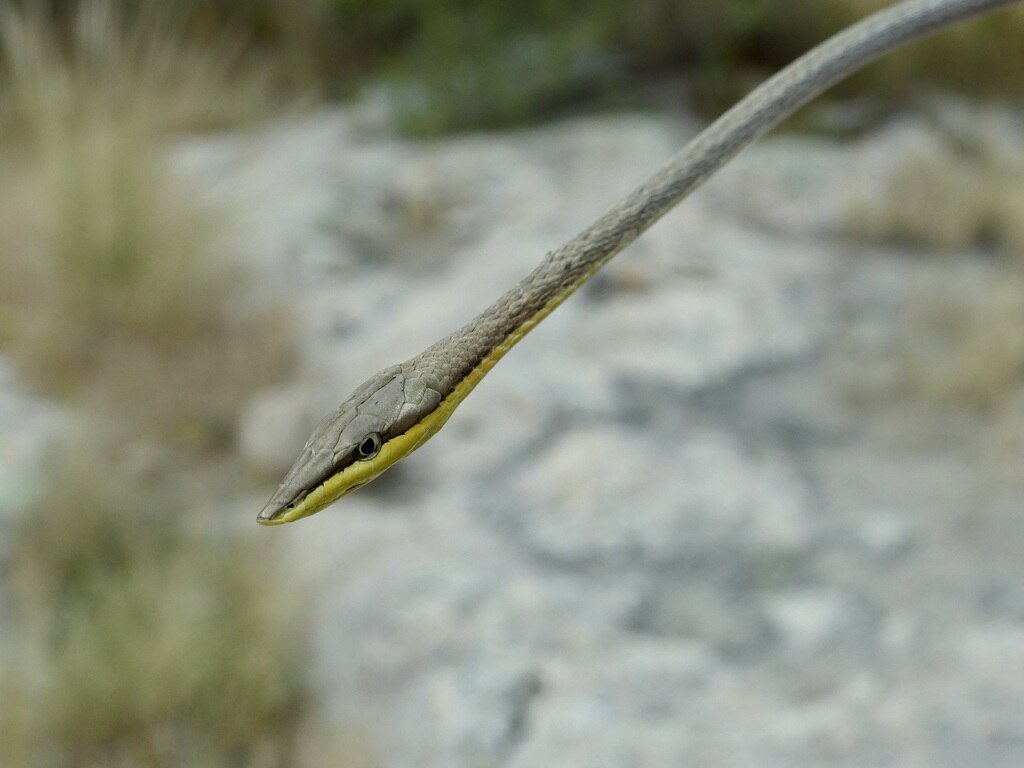
Among the most accomplished branch mimics is the African twig snake (Thelotornis kirtlandii), a venomous species found in forests across sub-Saharan Africa. This remarkable reptile possesses a pencil-thin body and a pointed head that perfectly resembles the tip of a broken branch. Its gray-brown coloration, complete with dark flecks and streaks, replicates the appearance of weathered wood with astonishing accuracy. When threatened, the twig snake will freeze in place, often extending its body at an angle from a branch, creating a perfect impression of a small twig or stem. Perhaps most impressively, these snakes can remain motionless in this position for hours, their only movement being an occasional swaying that mimics a branch moved by gentle forest breezes.
Evolution of Branch Mimicry
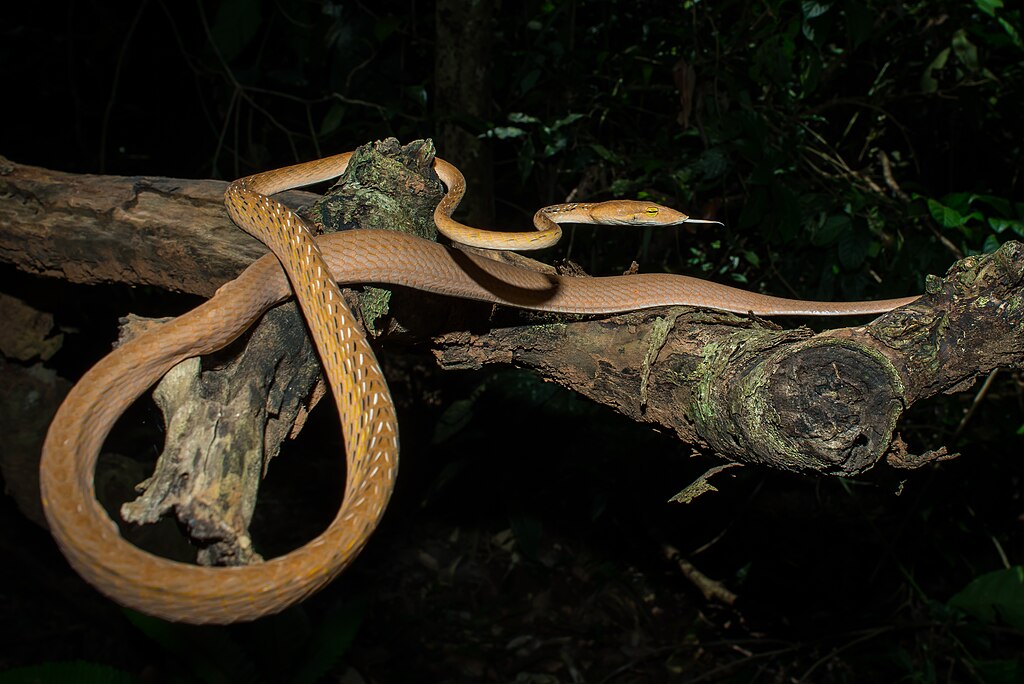
The evolution of branch-mimicking camouflage in snakes represents a fascinating case of convergent evolution, with multiple snake families independently developing similar adaptations. Scientists believe this specialized camouflage evolved as a response to predation pressure, particularly from birds and mammals that hunt by sight. Over millions of years, natural selection favored snakes whose appearance and behavior best resembled their surroundings, with each small genetic change that enhanced the disguise giving individuals a survival advantage. Interestingly, this form of mimicry often evolved alongside specific hunting strategies, as the disguise serves both defensive and offensive purposes. The result is a remarkable example of how evolutionary processes can shape an animal to fit perfectly within its ecological niche, blurring the line between organism and environment.
Anatomical Adaptations

The branch-mimicking ability of these specialized snakes goes far beyond simple coloration, involving sophisticated anatomical adaptations. Their bodies tend to be extremely slender and elongated, with some species having incredibly thin profiles when viewed head-on. Many species have developed keeled scales that create a rough, bark-like texture instead of the smooth scales found in many other snakes. Their heads are often elongated and narrow, sometimes with pointed snouts that resemble broken twig ends. Some species even have specialized scale arrangements around their eyes that break up the outline of this distinctive feature, making the eyes nearly invisible to observers. These anatomical adaptations work together to create a comprehensive disguise that functions from any viewing angle.
Behavioral Camouflage Strategies
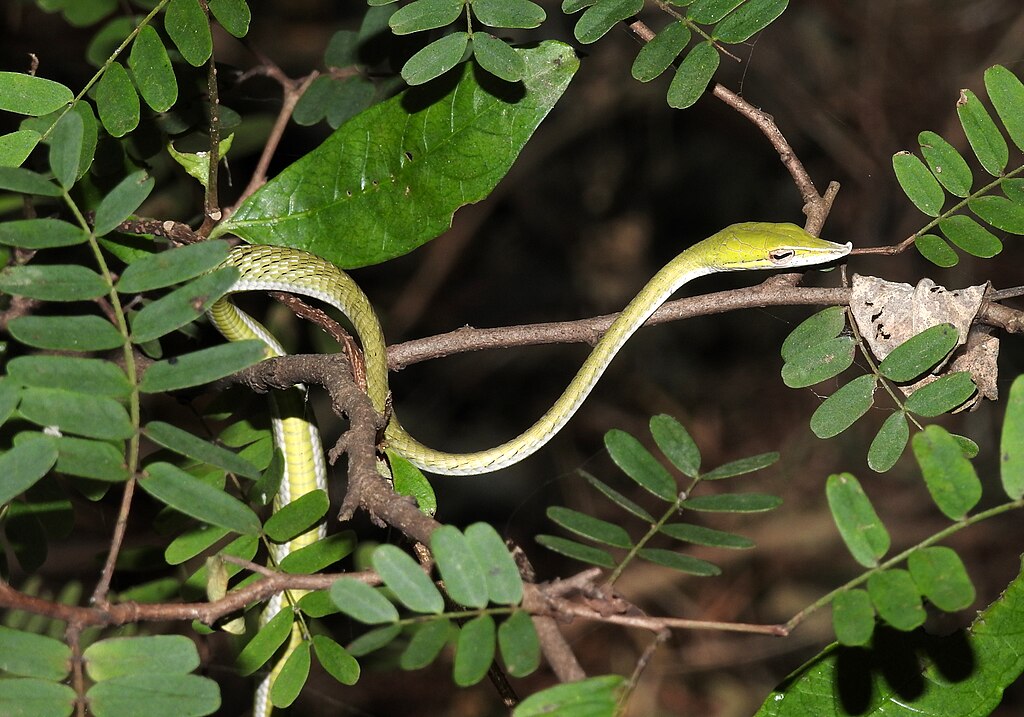
Perhaps even more impressive than their physical appearance is the behavioral component of branch-mimicking snakes’ camouflage strategy. When detecting potential threats, these snakes freeze in positions that enhance their resemblance to branches. Some species will extend their bodies away from actual branches at the same angle a twig might naturally grow. Others will position themselves along real branches, becoming virtually indistinguishable from the branch itself. When they do move, many species adopt a distinctive swaying motion that mimics how a twig might move in a light breeze, rather than the typical serpentine movement of other snakes. Some species will even allow themselves to sway passively when wind moves the vegetation around them, further enhancing the illusion that they are simply part of the plant.
The Vine Snakes of Southeast Asia

The Asian vine snakes (genus Ahaetulla) represent some of the most specialized branch mimics in the snake world, with their extraordinary adaptations for life among the forest vegetation. These slender, brilliantly camouflaged snakes possess unusual horizontal, keyhole-shaped pupils that provide enhanced depth perception – crucial for accurately judging striking distance when hunting. Their pointed snouts extend into a small scale projection that enhances their twig-like appearance, looking precisely like the tip of a growing vine. Many species in this genus display varied coloration ranging from bright greens to browns and grays, allowing them to blend with different forest environments. What makes these snakes particularly remarkable is their ability to maintain their disguise even while moving, as they glide between branches with the same gentle, swaying movement that characterizes wind-blown vines.
The Hognose’s Branch Deception
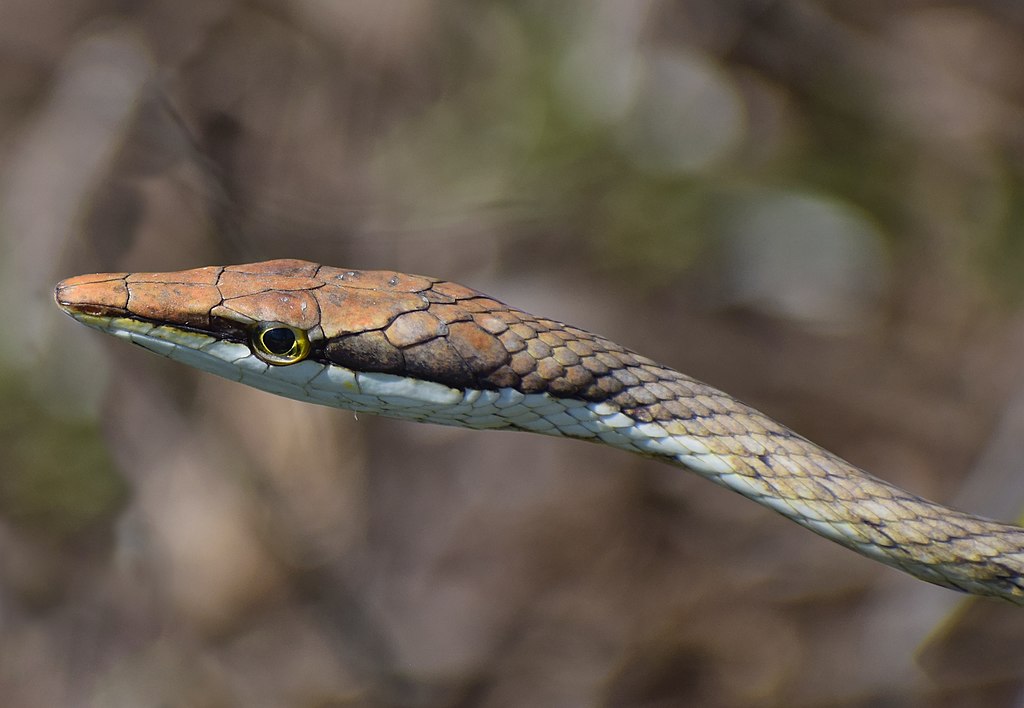
While not as specialized as some vine snakes, certain hognose snake species (genus Heterodon) employ branch mimicry as part of their defensive repertoire. These North American snakes have evolved a distinctive upturned snout that resembles a broken twig end, and their stockier bodies can still effectively resemble thicker branches when they remain motionless. When threatened, hognose snakes employ a fascinating range of defensive behaviors, including flattening their heads and necks, hissing loudly, and striking with closed mouths. If these tactics fail, many hognose species will then freeze in contorted positions that enhance their resemblance to twisted deadwood. This multi-layered defensive strategy represents an interesting evolutionary approach where branch mimicry serves as just one component of a complex defensive toolkit.
Hunting from Invisible Perches

The branch camouflage of these specialized snakes serves not only as defense but as a sophisticated hunting strategy. Many twig and vine snake species are ambush predators that remain perfectly still until suitable prey ventures within striking range. Their camouflage allows them to position themselves along pathways frequently traveled by lizards, frogs, or birds, becoming essentially invisible until the perfect moment to strike. Some species will position themselves with their heads angled downward from branches, ready to launch lightning-fast strikes at passing prey. The African twig snake employs an additional hunting advantage – its venom contains powerful toxins that rapidly immobilize prey, allowing it to capture agile prey like lizards and birds that might otherwise escape after the initial strike. This combination of perfect camouflage and specialized venom makes these snakes remarkably efficient predators.
Vision Adaptations for Life as a Branch

Many branch-mimicking snakes have evolved specialized visual systems that complement their lifestyle as disguised predators. Species like the vine snakes have developed binocular vision with significant overlap in their visual fields, providing enhanced depth perception that helps them accurately strike at prey from their motionless positions. Their eyes often feature horizontal, keyhole-shaped pupils that provide improved horizontal vision while maintaining their disguise. Some species possess enhanced color vision compared to other snakes, potentially allowing them to better match their surroundings or more accurately detect colorful prey against the forest background. These visual adaptations represent specialized evolutionary developments that support both their hunting strategy and their camouflage needs, highlighting how completely these species have adapted to their ecological niche.
Geographic Distribution and Habitat
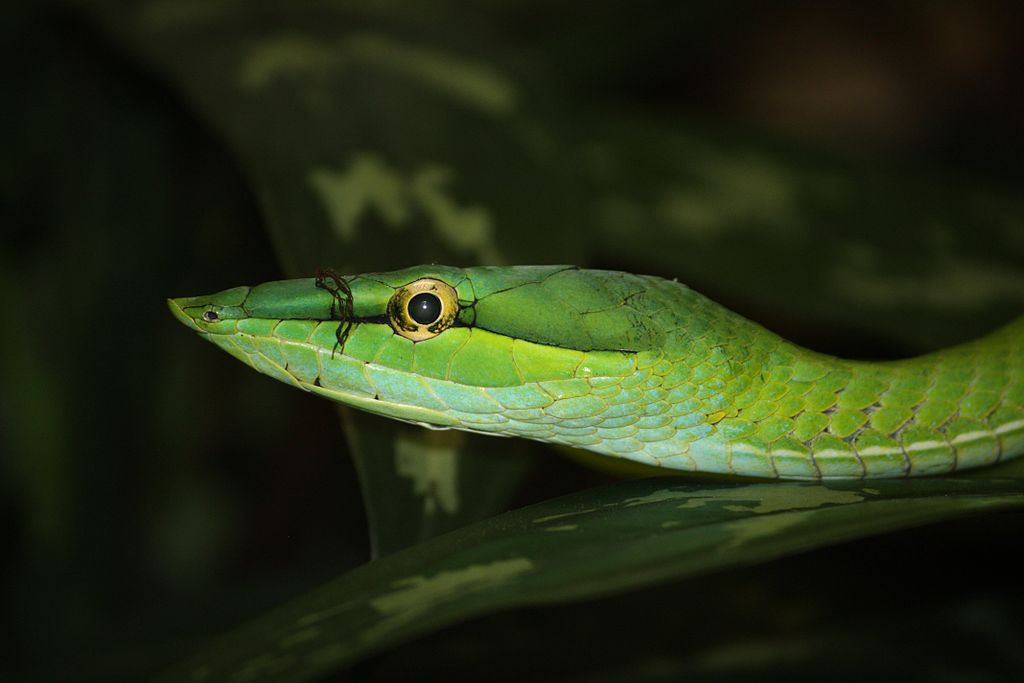
Branch-mimicking snakes have evolved independently in multiple forests around the world, demonstrating how effective this camouflage strategy can be in woodland environments. The African twig snakes (genus Thelotornis) inhabit forests across sub-Saharan Africa, from dense rainforests to more open woodland savannas. The Asian vine snakes (genus Ahaetulla) are distributed throughout Southeast Asia, from India to the Philippines and Indonesia, primarily in tropical and subtropical forests. In the Americas, the brown vine snake (Oxybelis aeneus) ranges from the southwestern United States through Central America and into South America, adapting to various woodland habitats. These diverse geographic locations demonstrate how branch mimicry has independently evolved multiple times as an effective survival strategy in forested environments worldwide.
Conservation Challenges

Despite their remarkable adaptations, many branch-mimicking snake species face significant conservation challenges in the modern world. Habitat destruction remains the primary threat, as deforestation eliminates the specialized forest environments these snakes require. Their specialized lifestyles and specific habitat requirements often make them particularly vulnerable to environmental changes. Some species, like certain Asian vine snakes, are also collected for the exotic pet trade, putting additional pressure on wild populations. Because of their secretive nature and excellent camouflage, population assessments for many of these species remain challenging, making conservation status difficult to determine accurately. Climate change presents an additional threat, as it may alter forest compositions and affect the prey species these specialized predators depend upon.
Myths and Cultural Significance

Throughout human history, the remarkable camouflage abilities of branch-mimicking snakes have inspired both fear and fascination in various cultures. In parts of Africa, the nearly invisible twig snakes are sometimes associated with spiritual powers or believed to possess magical abilities because of their seeming ability to appear and disappear. Some indigenous cultures in Southeast Asia traditionally believed that certain vine snakes could transform between animal and plant forms, blurring the line between living categories. The seemingly magical ability of these snakes to vanish before one’s eyes has contributed to their mythological status in some regions. In modern times, these snakes continue to captivate human imagination, appearing in nature documentaries and wildlife photography that showcase their extraordinary camouflage abilities.
The Science of Perfect Disguise
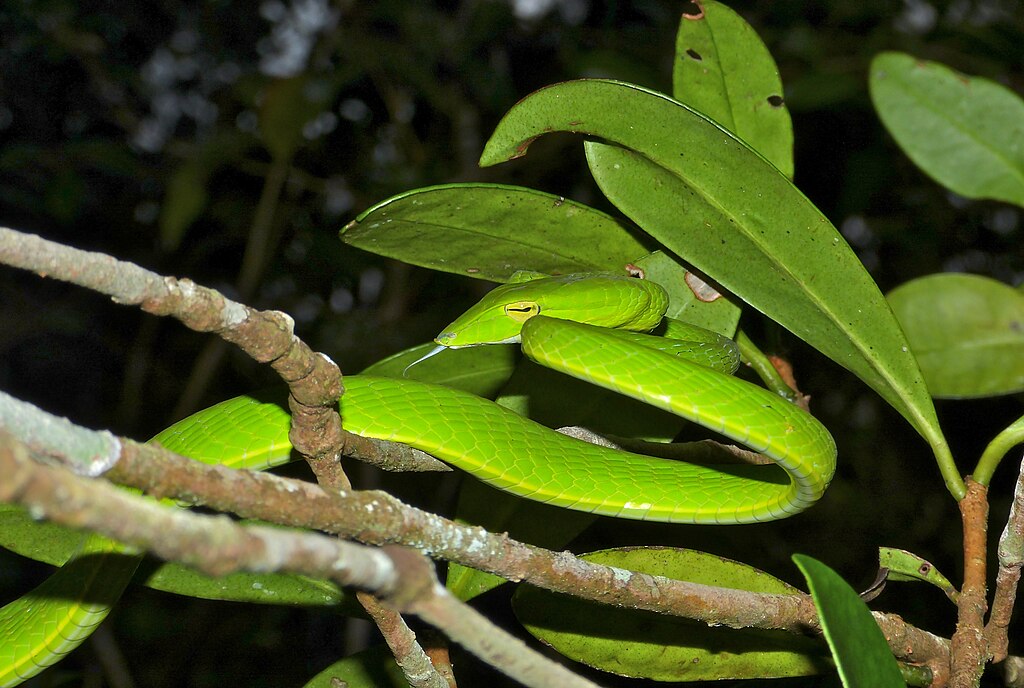
The study of branch-mimicking snakes provides scientists with valuable insights into the mechanisms of evolution and the development of complex adaptations. Researchers analyze the genetic foundations that allow for the development of specialized scale patterns, body shapes, and behaviors that create such effective disguises. Beyond genetics, scientists study how environmental pressures shape these adaptations over time, and how predator-prey relationships drive the evolution of increasingly sophisticated camouflage. Some researchers use branch-mimicking snakes as models to develop bioinspired technologies, including camouflage systems with potential military or conservation applications. The interdisciplinary study of these remarkable animals continues to expand our understanding of evolutionary processes, visual systems, and the complex relationships between organisms and their environments.
Conclusion
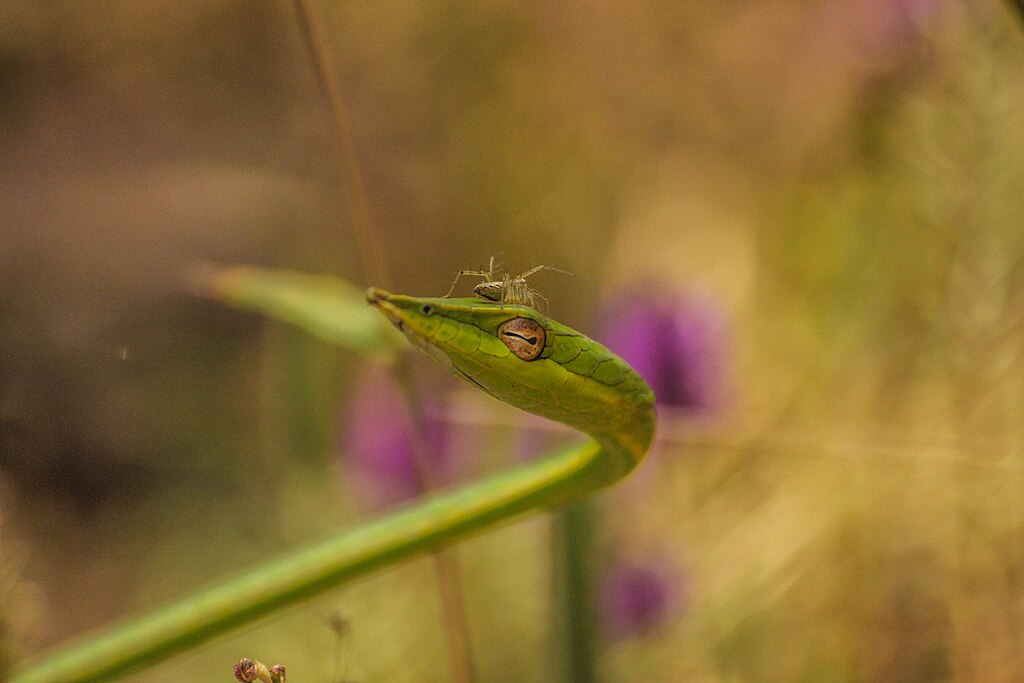
The branch-mimicking snakes of the world represent some of nature’s most impressive evolutionary achievements. Through millions of years of adaptation, these remarkable reptiles have developed comprehensive disguises that blur the boundary between animal and environment. Their specialized body shapes, coloration patterns, scale textures, and behaviors work in concert to create illusions so perfect they can disappear in plain sight. As we face a world of increasing environmental challenges, these masters of camouflage remind us of the incredible complexity and fragility of evolutionary adaptations. Each species represents a unique evolutionary solution to the challenges of survival, demonstrating nature’s endless capacity for innovation. In the silent, motionless form of a snake perfectly disguised as a fallen branch, we witness the extraordinary power of natural selection to shape life into almost magical forms.

